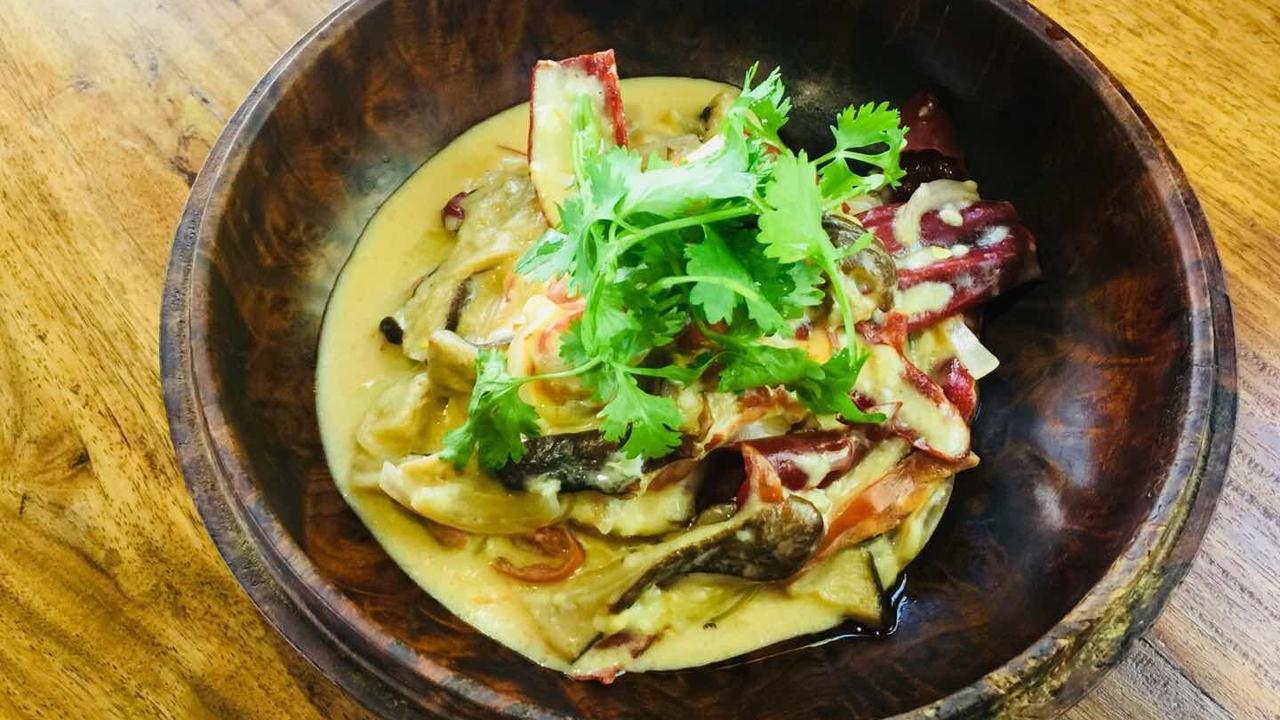A guide to food in Bhutan
by Gemma on 5th October 2018

You can be forgiven for being unable to identify Bhutan’s national dish. This small Himalayan Kingdom doesn’t have an instantly recognisable, internationally exported cuisine like Thailand and India. Before I visited, I was unsure of what to expect in terms of food. I suspected it would be rice-heavy, like the food of its neighbouring countries (a correct assumption), but was unsure of flavours, veg and protein.
Call me naïve, but I wasn't even sure if Bhutan grew the common-or-garden veggies I could find at home in the UK, or if there was a whole new vegetable world on offer in the Himalayas! And, being a Buddhist country, would meat and fish be a rare occurrence on the menu? If you’re planning a trip to Bhutan, then you’re probably similarly intrigued.
Spoiler alert – Bhutan is not the gourmet hub of the Himalayas. Essentially, Bhutanese cuisine revolves around chillies and cheese (datshi)! Having said that, there is variety. I was pleasantly surprised to be offered asparagus, cucumber and broccoli, and carnivores can tuck into beef, pork and (during winter months) yak meat. You’ll typically see more of the locally produced red rice, which has a lovely nutty taste, than white. And if you travel east to Bumthang, buckwheat noodles and pancakes provide the staple carbs.
In terms of snacks, the Bhutanese, much like their Nepalese & Tibetan neighbours, love a momo: plump steamed dumplings, stuffed with beef or cheese. In Bhutan, they are served with ezay, a hot chilli sauce that the Bhutanese eat with pretty much everything!
A snack with a more acquired taste are the dried yak cheese cubes you’ll see dangling on strings at roadside food stalls and markets. They may look like icing-sugar-coated nuggets of nougat, but the taste couldn’t be further removed. Each cube is rock hard in texture, and sucking to soften only releases a seriously potent cheese flavour. Like I said... an acquired taste.
During a visit to Bhutan, you are more than likely to sample the following dishes:
Ema Datshi
Bhutan’s national dish, Ema Datshi is chillies and cheese. Simple! It is served with every meal. Whole chillies, used as a vegetable as opposed to a seasoning, cooked in butter and Bhutanese cheese. It sounds like a pretty basic dish, but in my experience no two ema datshis are the same. The cheese sauce can vary in thickness; the chillies can vary in size and colour; and the dish can vary in spicy-heat.
Kewa Datshi and Shamu Datshi
Two variations on the vegetables-in-cheese-sauce theme, and popular inclusions in most meals. Kewa means potato; Shamu means mushroom. You get the idea! Incidentally, Bhutan grows an impressive variety of mushrooms. There’s a National Mushroom Centre on the outskirts of Thimphu, and even fungi focused festivals.
Shakam Datshi
Shakam Datshi is one for the meat eaters, and comprises chunks of slightly chewy dried beef, cooked in (you guessed it) butter and cheese sauce.
If you’re feeling overwhelmed by cheese-covered dishes, keep a look out for ‘Paa’. Paa comprises of slices of dried meat, stir fried with whole, dried red chillies (of course), sometimes with the addition of seasonal vegetables. Shakam Paa uses dried beef, Phaksha Paa features slices of dried pork, and rather delicious sun-dried pork belly is used in Sikkam Paa.
Don't worry if you don't want to eat chillies and cheese every day. Many of the top end hotels offer an international menu, and in the capital, Thimphu, you’ll find eateries serving Indian, Japanese, Mexican and Italian cuisine. However, I found it refreshing to visit a country where there are no well-known international coffee chains or fast food stores…yet. Even Yangon in Myanmar sadly now has a McDonald’s.
Ema Datshi recipe
(recipe courtesy of COMO Hotels & Resorts)
Ingredients:
3 red Bhutanese chillies (or another kind of large chilli), whole
1 small onion, sliced
1 garlic clove, chopped
1 cup of Amul (Indian) cheese or cheddar, grated
2 grams of butter
1 cup of water
Method:
Heat the sliced onion, garlic, chillies, salt, butter and water in a pot, and let them simmer for 10 minutes. Then add the cheese and continue to simmer until the cheese has melted and the stew has thickened to a yoghurt-like consistency.
All images associated with this article used courtesy of COMO Hotels & Resorts